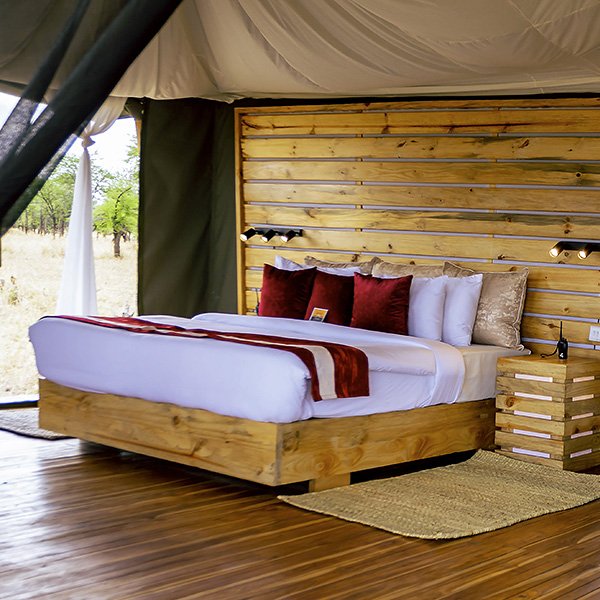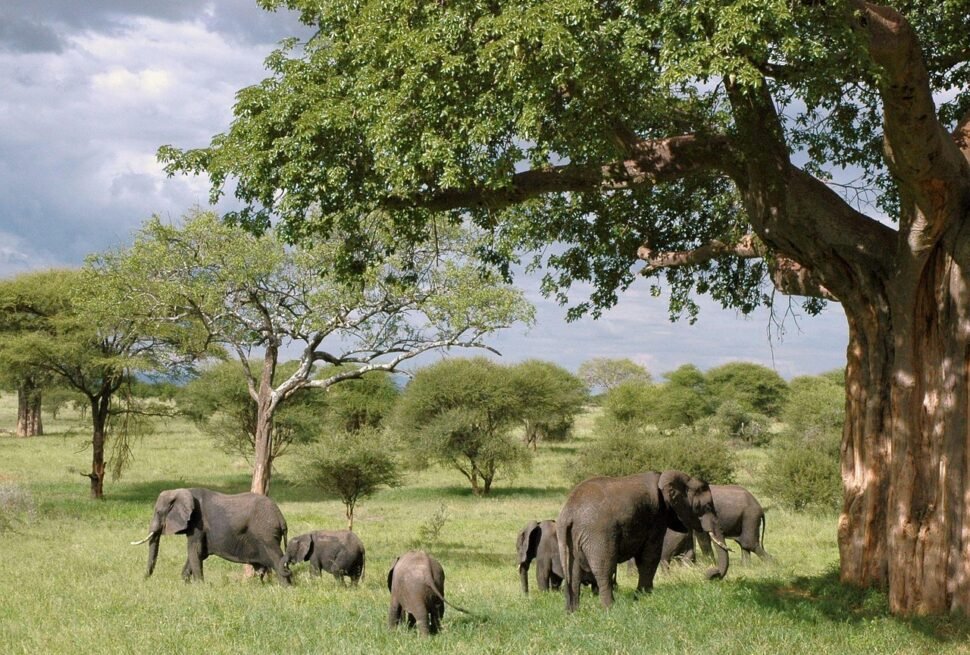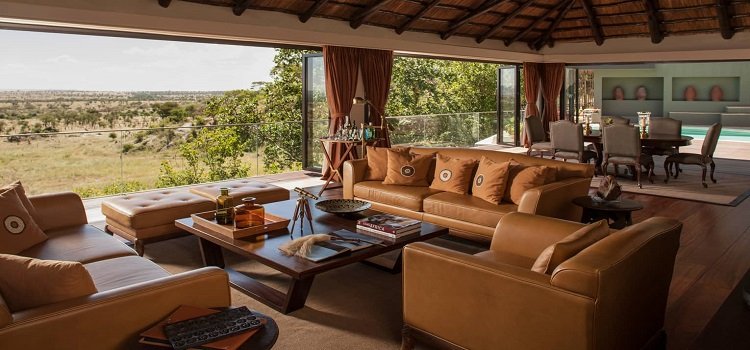Tanzania is one of the most sought-after destinations in Africa for luxury safaris, offering breathtaking landscapes, diverse wildlife, and some of the most exclusive safari lodges and camps on the continent. Deciding on the best time to visit for a luxury safari is crucial because every season offers a different experience. From the Great Migration in the Serengeti to the lush green landscapes of the rainy season and the predator-rich plains of Ruaha, Tanzania is a year-round destination. However, the timing of your journey will determine what you see, how many other travelers you encounter, and the type of luxury experiences available.
Understanding the Safari Seasons in Tanzania
Tanzania’s climate can be divided into three main safari seasons: the dry season, the short rains, and the long rains. Each comes with its own advantages for luxury travelers.
Dry Season (June to October):
This is the classic safari period when wildlife viewing is at its absolute best. The weather is cooler, rain is minimal, and the vegetation is thin, making animals easy to spot. Luxury travelers can expect clear skies and comfortable conditions, though this period is also the busiest and most expensive due to high demand.
Short Rains (November to December):
Short showers refresh the landscapes without disrupting safari activities. The bush turns green, migratory birds arrive, and crowds thin out. Luxury lodges often offer attractive specials during this time, and photographers will find the light after rain particularly beautiful.
Long Rains (March to May):
This period sees heavier rainfall, and while some lodges close, others remain open and provide excellent value for money. The scenery is lush, wildlife is still active, and very few tourists are around. Luxury travelers who embrace adventure can enjoy an extremely private experience, with exclusive lodges offering discounted rates and personalized service.
Month-by-Month Luxury Safari Guide
January to March:
This is calving season in the southern Serengeti and Ndutu plains. Hundreds of thousands of wildebeest give birth, drawing predators such as lions, cheetahs, and hyenas. For luxury travelers, this is one of the most thrilling times to visit, with dramatic predator-prey interactions unfolding daily. Lodges and mobile camps position themselves near the action, offering guests front-row seats to the spectacle.
April to May:
The long rains transform Tanzania into a green paradise. While some camps close, luxury lodges that remain open offer unbeatable exclusivity and significant value. Wildlife is still abundant, and photographers appreciate the dramatic skies, lush scenery, and fewer vehicles at sightings. This is the perfect time for those who want solitude and don’t mind the occasional rain shower.
June:
As the rains fade, the dry season begins. The western Serengeti comes alive with the Great Migration moving toward the Grumeti River. Large crocodiles await, making crossings dramatic. Luxury lodges in this region provide exclusivity with fewer tourists compared to the northern Serengeti.
July to August:
This is peak safari season. The northern Serengeti becomes the stage for the Mara River crossings, one of nature’s greatest spectacles. Tarangire National Park also flourishes during these months with massive herds of elephants congregating near dwindling water sources. Luxury travelers should expect high demand and premium prices but also some of the most unforgettable wildlife encounters in Africa.
September:
The river crossings in the northern Serengeti continue, and wildlife viewing remains exceptional. Crowds are slightly fewer than in July and August, making this an ideal month for those seeking top-tier game viewing with a touch more exclusivity. Luxury lodges near the Mara River are perfectly positioned for daily action.
October:
Wildlife concentrations are still impressive across Tanzania. In Tarangire, elephants remain in large numbers, while Ruaha and Nyerere (Selous) offer thrilling big-cat sightings with very few visitors. For luxury travelers, this month is perfect for a combination safari, splitting time between the northern circuit and the quieter southern parks.
November to December:
The short rains begin, turning the plains green and attracting migratory birds. The Great Migration herds start moving south toward the Serengeti, setting up for the calving season early in the new year. Luxury travelers benefit from lower rates, fewer tourists, and stunning photographic conditions. December also brings festive season demand, so early booking is recommended for those traveling over Christmas and New Year.
Park Highlights by Season
Serengeti National Park:
The Serengeti is Tanzania’s most famous safari park and the heart of the Great Migration. From January to March, the southern Serengeti and Ndutu plains host calving season. In May and June, the herds move through the western corridor, while July to September is all about river crossings in the north. Luxury travelers can select camps and lodges that move with the herds or choose permanent luxury lodges offering exclusive experiences.
Ngorongoro Crater:
Ngorongoro is spectacular year-round, with one of the highest concentrations of wildlife in Africa. Luxury lodges perched on the crater rim provide unmatched views and early access for game drives into the crater. Cool mornings and evenings make June to September especially pleasant.
Tarangire National Park:
Best visited from July to October, Tarangire is known for its large elephant herds and iconic baobab trees. Luxury lodges here offer a quieter experience compared to Serengeti, with excellent walking safaris and night drives in nearby conservancies.
Ruaha National Park:
For travelers seeking wilderness and exclusivity, Ruaha shines from June to October. Its predator density is remarkable, and luxury camps here combine rugged beauty with fine comfort. Few tourists venture this far, ensuring an intimate safari.
Nyerere National Park (Selous):
Nyerere offers a mix of boat, walking, and traditional game drives, with the dry season (July to October) being the best for wildlife concentrations. Luxury lodges along the Rufiji River provide exceptional experiences with little competition from other vehicles.
Mahale Mountains & Gombe:
These western parks are best from June to October and again in December to February for chimpanzee trekking. Luxury lodges on Lake Tanganyika provide barefoot elegance, combining primate encounters with relaxation.
Note:
The best time for a luxury safari in Tanzania ultimately depends on what you want to see and experience. If witnessing the Great Migration river crossings is your dream, July to September in the northern Serengeti is unmatched. For predator action and new life, February’s calving season is unforgettable. For exclusivity and excellent value, the green seasons deliver luxury without the crowds. Every season has something extraordinary to offer, and with Tanzania’s remarkable diversity of landscapes and wildlife, a well-planned luxury safari can be unforgettable at any time of the year.
Matching Luxury Safaris With Traveler Preferences
- First-time visitors will find June to October ideal, with reliable game viewing and iconic experiences in Serengeti, Ngorongoro, and Tarangire.
- Honeymooners may prefer the quieter months of November, December (before Christmas), or February, when romance blends with fewer crowds and lush landscapes.
- Families often travel in July and August during school holidays, making this period popular despite higher rates.
- Photographers will appreciate February’s calving season, as well as the green seasons for dramatic skies and vibrant colors.
- Repeat visitors might prefer the southern parks, Ruaha and Nyerere, during June to October for remote, high-end safari experiences.





